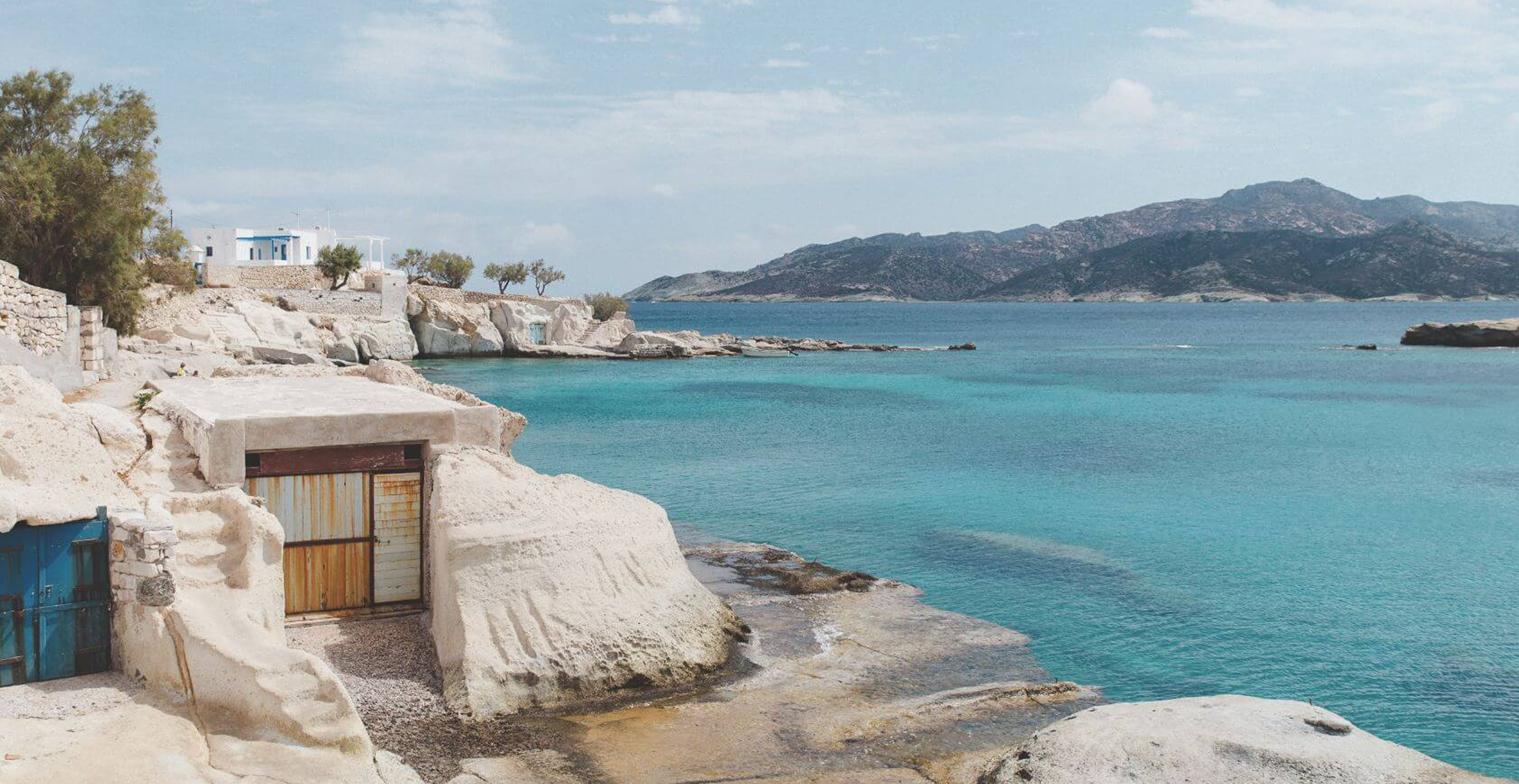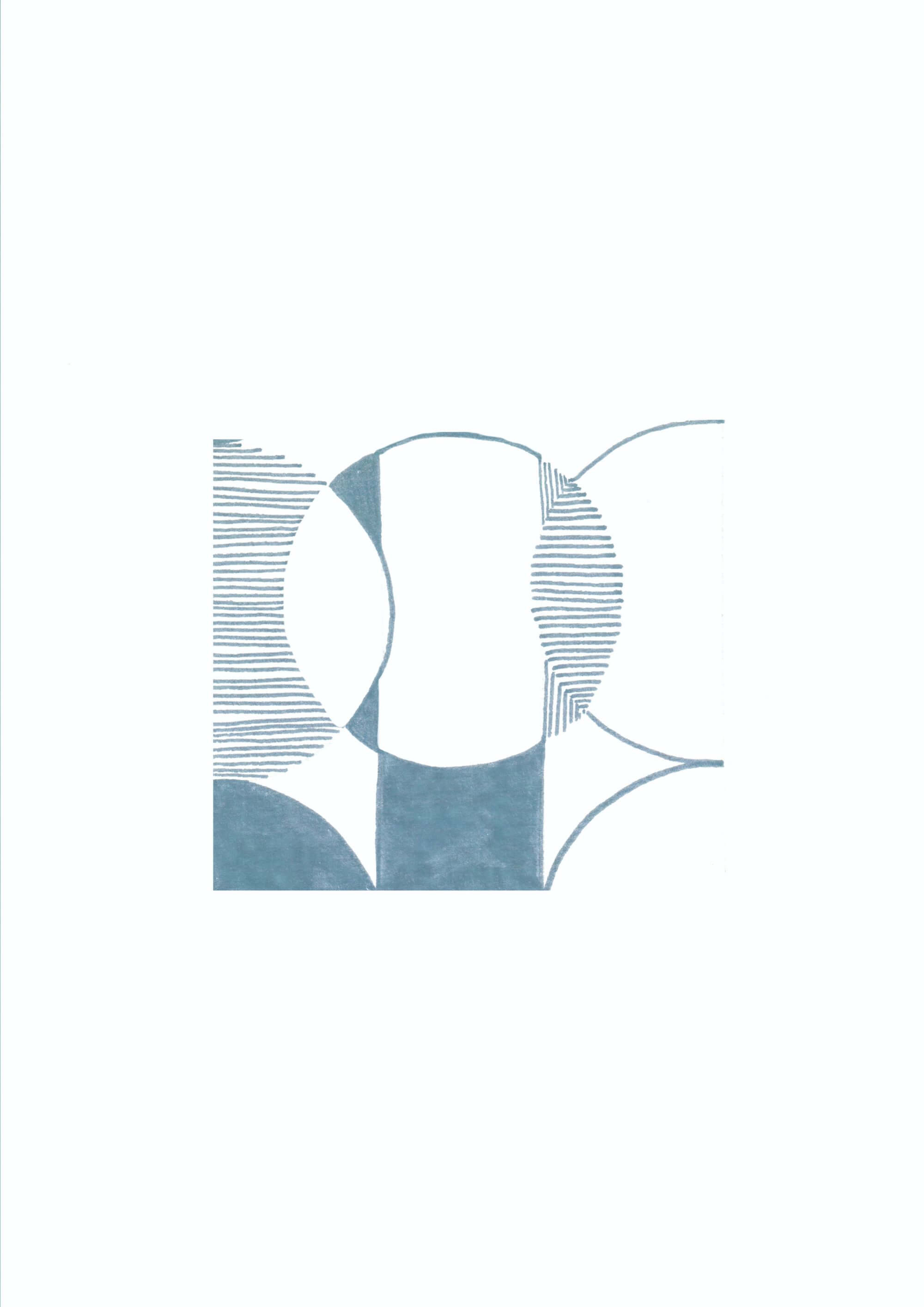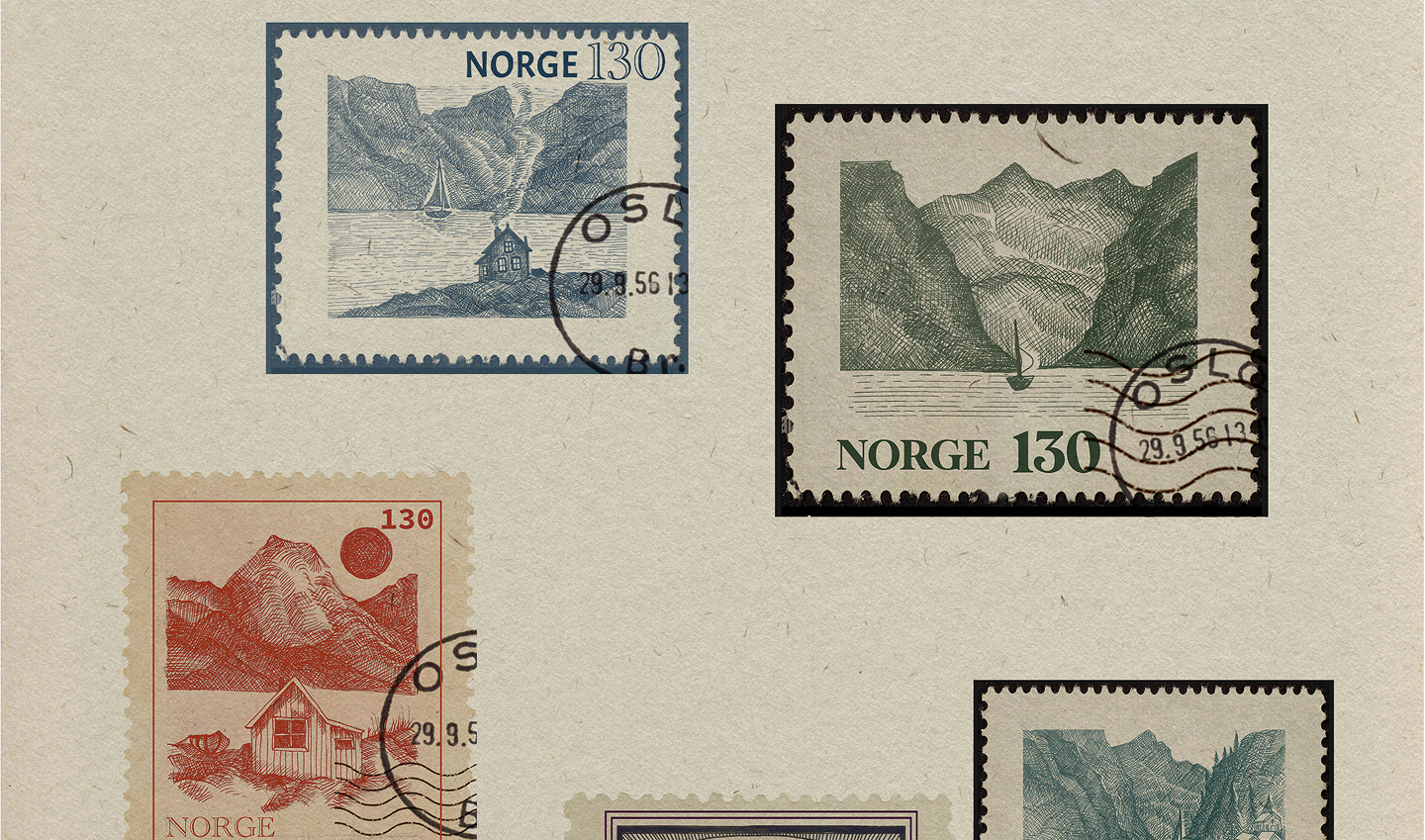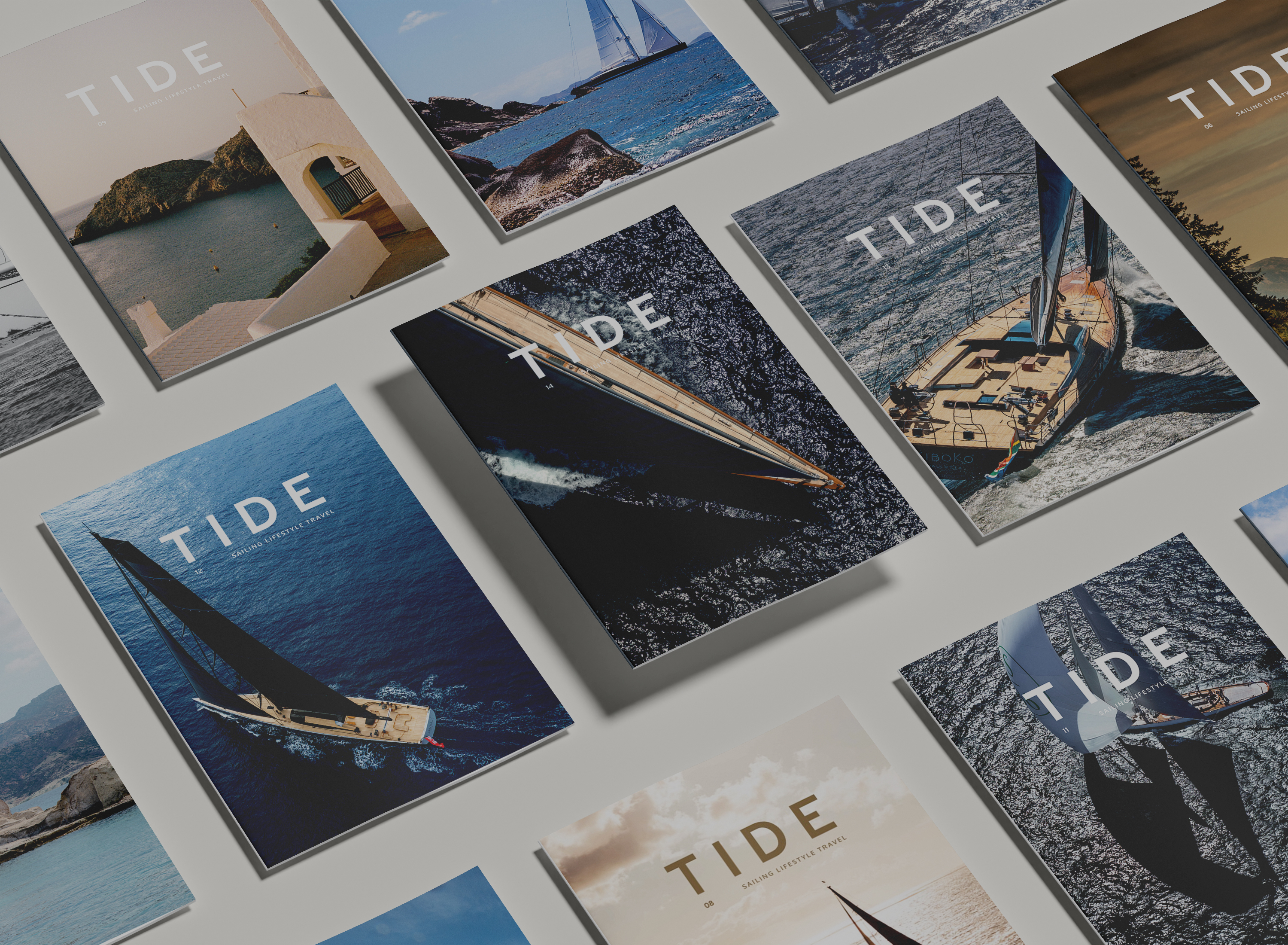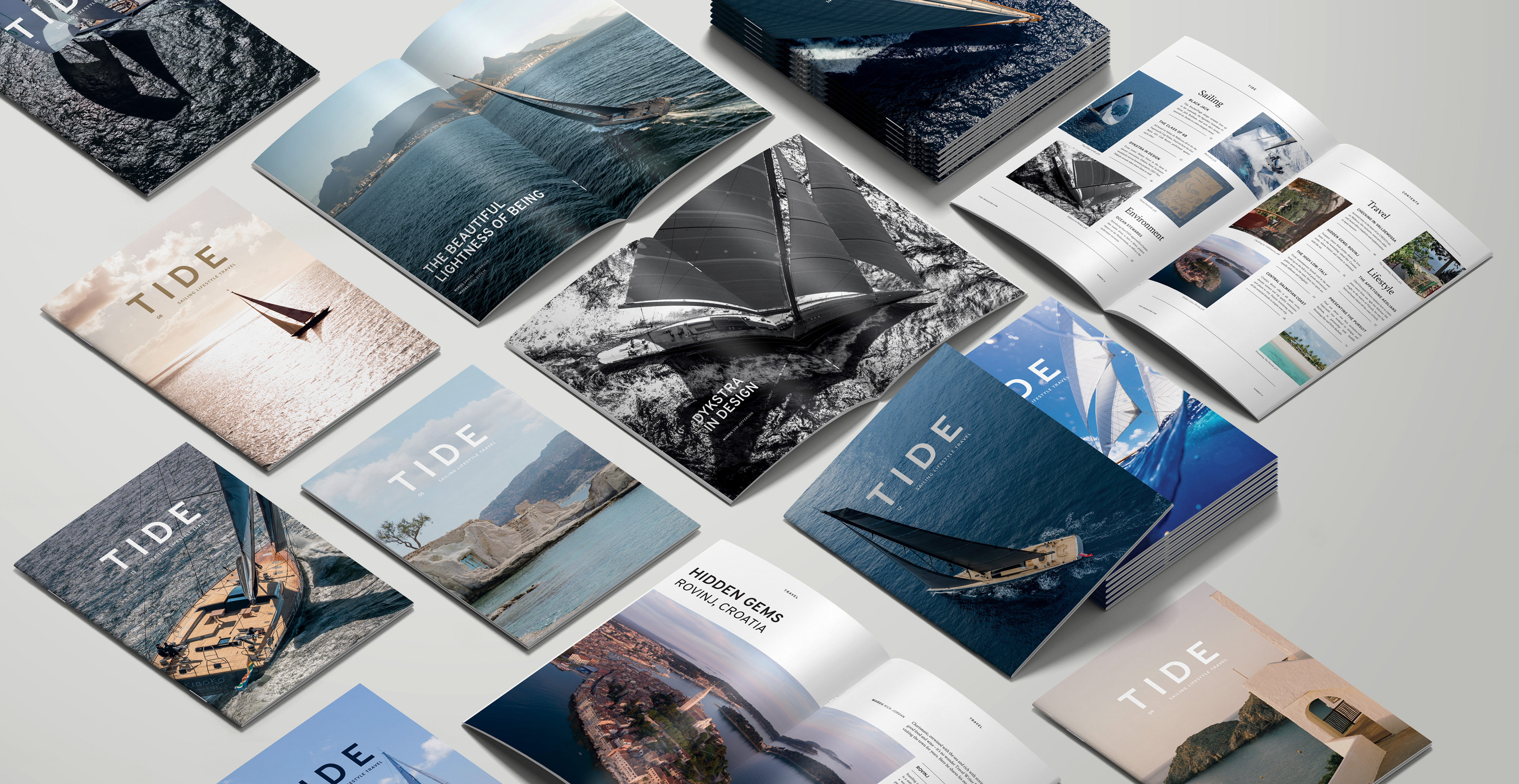It’s rare, as a journalist, to come across four executives who can rearrange their schedules quick enough to be able to jump on a group call within 24 hours of an initial introduction. Even rarer when everyone is in Europe and the calendar has just flipped over to the first of August, that sacred month of summer holidays.
This means that, before a single question has been asked about the so-called Project Zero, there is a strong sense that everyone in attendance is highly invested in this pioneering project. The assembled cast in question – Dykstra Naval Architects, Vripack Yacht Design and Vitters Shipyard – has been brought together to collaborate by Foundation Zero, a group of impact investors with the belief that, with all the latest technology out there, it should be possible to build what others have labelled as impossible: a fossil-free sailing yacht.
“When we first started our conversations, we had many more questions than we could ever answer,” Vripack’s Co-Creative Director Marnix Hoekstra, remembers. “We didn’t know if we could reach our goals.”
“But the good thing about this group is that they don’t take the first no as an answer,” Foundation Zero’s Eduard van Benthem chimes in. “And that’s why we’ve taken on the challenge to make this happen.”
Four years after the first sketches were put to paper, Project Zero is so much more than a concept, a “what if”. “The aluminium hull is one month from being finished and will be hot-work free by the end of the year,” explains Louis Hamming, CEO of Vitters, the yard where the sailing Superyacht is in build. The sleek 69m ketch is set to launch in 2025, powered by a trio of sources: hydro, solar and wind. When it does, it will enter the market as an example for future sailing yachts to follow.
One for all
The path to meaningful change involves disrupting traditional codes, an approach inherent in this project from day one. Gone is a designated project manager, replaced by a flat hierarchy where everyone is on equal footing. “Since nobody is different, it’s all about the project,” says Hoekstra.
“We’ve never been involved in a project this organic,” adds Mark Leslie-Miller, partner at Dykstra Naval Architects. “Everyone can feel where the gaps are that they can fill and we jump in whenever we’re needed.”
What is also groundbreaking in an industry that traditionally keeps innovation close to its chest is that every sketch, report and data measurement is available as open source.
“Proving that it is possible to plan and build a fossil-free yacht isn’t just for our own self-esteem, it is also to make an impact, to create a platform for further development and to trigger others into thinking that they can achieve this as well,” says van Benthem of the decision to release all their learnings into the public domain. “You can’t make it any easier than by sharing the knowledge we’ve gained; both the successes and the failures.”
That’s where the impact of Foundation Zero’s combined investors came to the fore, Hoekstra adds. “Even if we failed, they said we had to give this away. Then, people can no longer say no to future owners who might
have the same idea.”
Hamming knows that the rest of the industry is keenly following their progress — and the outcome. “People are showing interest, but everybody’s still reluctant to hop on the bus. They’re waiting to see [the yacht] work,” he says. Beyond the research, the intention is also to report on the outcomes. “When the ship is in operation, data will be gathered, stored and shared,” explains Leslie-Miller. Then, he continues, “‘the proof is in the pudding’. We’ll have hard evidence of what is and isn’t possible.”
No compromise
Project Zero is also tangible proof that fossil-free sailing doesn’t have to mean pulling back on Superyacht comforts. For Leslie-Miller, this was the toughest code to crack. “To have a ship that can sail around the world is not that much of a challenge,” he says. “To create a luxury sailing vessel that is uncompromising in terms of how nice it is to be on board and how aesthetically pleasing it is, is.”
“The whole boat is a visible – and often invisible – expression of this challenge,” adds Hoekstra.
Solutions range from a layer of cork that acts like a second deck under the teak deck to absorb the solar rays before they hit – and heat up – the aluminium hull below, to thicker and “substantially larger” biminis [lightweight covers] to host the solar kit.
The very aim of the project has also made the engine room less pivotal, although any space savings have been quickly soaked up by the battery storage requirements (the equivalent of 88 Tesla cars, Hoekstra has calculated). It has allowed Hoekstra to work in some interesting design features as well, such as a hidden corridor connecting crew to the guest areas. “I think we have the most berths compared to any boat of this size,” he says. Along with an owner’s cabin, the ketch’s design allows for six guest cabins.
The yacht has also thrown up specific crew requirements beyond the need for a highly skilled IT and electrical engineer. “For a large part, the engine is replaced by sails. If you don’t have proper sailors on board, you’re going to be stuck out,” says Leslie-Miller.
Cracking the code
Leslie-Miller explains that Dykstra Naval Architects has never shunned the risks of ambitious projects, a sentiment echoed by Hoekstra and Hamming. But was there a eureka moment, a breakthrough when they realised they had cracked the code to turn the concept into a reality?
“Yes,” smiles Hoekstra. “But we can’t take any credit for it.”
The team was struggling to keep the boat alive for a two-week charter period, their target duration. “We were focusing on wind and electrical energy,” explains Hoekstra. Then, the physicist on the project reminded them about thermal energy. “The minute we split the electrical energy from the thermal energy and concentrated on two individual parts that we could individually harvest and store was when we thought we might actually get there,” he continues. “For me, that was the game changer. I remember it well.”
The right concept, the right crew and the right conditions: it seems Foundation Zero could be the perfect storm the industry needs in order to introduce a permanent change in the role of renewable energy in sailing yachts.
It’s rare, as a journalist, to come across four executives who can rearrange their schedules quick enough to be able to jump on a group call within 24 hours of an initial introduction. Even rarer when everyone is in Europe and the calendar has just flipped over to the first of August, that sacred month of summer holidays.
This means that, before a single question has been asked about the so-called Project Zero, there is a strong sense that everyone in attendance is highly invested in this pioneering project. The assembled cast in question – Dykstra Naval Architects, Vripack Yacht Design and Vitters Shipyard – has been brought together to collaborate by Foundation Zero, a group of impact investors with the belief that, with all the latest technology out there, it should be possible to build what others have labelled as impossible: a fossil-free sailing yacht.
“When we first started our conversations, we had many more questions than we could ever answer,” Vripack’s Co-Creative Director Marnix Hoekstra, remembers. “We didn’t know if we could reach our goals.”
“But the good thing about this group is that they don’t take the first no as an answer,” Foundation Zero’s Eduard van Benthem chimes in. “And that’s why we’ve taken on the challenge to make this happen.”
Four years after the first sketches were put to paper, Project Zero is so much more than a concept, a “what if”. “The aluminium hull is one month from being finished and will be hot-work free by the end of the year,” explains Louis Hamming, CEO of Vitters, the yard where the sailing Superyacht is in build. The sleek 69m ketch is set to launch in 2025, powered by a trio of sources: hydro, solar and wind. When it does, it will enter the market as an example for future sailing yachts to follow.
ONE FOR ALL
The path to meaningful change involves disrupting traditional codes, an approach inherent in this project from day one. Gone is a designated project manager, replaced by a flat hierarchy where everyone is on equal footing. “Since nobody is different, it’s all about the project,” says Hoekstra.
“We’ve never been involved in a project this organic,” adds Mark Leslie-Miller, partner at Dykstra Naval Architects. “Everyone can feel where the gaps are that they can fill and we jump in whenever we’re needed.”
What is also groundbreaking in an industry that traditionally keeps innovation close to its chest is that every sketch, report and data measurement is available as open source.
“Proving that it is possible to plan and build a fossil-free yacht isn’t just for our own self-esteem, it is also to make an impact, to create a platform for further development and to trigger others into thinking that they can achieve this as well,” says van Benthem of the decision to release all their learnings into the public domain. “You can’t make it any easier than by sharing the knowledge we’ve gained; both the successes and the failures.”
That’s where the impact of Foundation Zero’s combined investors came to the fore, Hoekstra adds. “Even if we failed, they said we had to give this away. Then, people can no longer say no to future owners who might
have the same idea.”
Hamming knows that the rest of the industry is keenly following their progress — and the outcome. “People are showing interest, but everybody’s still reluctant to hop on the bus. They’re waiting to see [the yacht] work,” he says. Beyond the research, the intention is also to report on the outcomes. “When the ship is in operation, data will be gathered, stored and shared,” explains Leslie-Miller. Then, he continues, “‘the proof is in the pudding’. We’ll have hard evidence of what is and isn’t possible.”
No Compromise
Project Zero is also tangible proof that fossil-free sailing doesn’t have to mean pulling back on Superyacht comforts. For Leslie-Miller, this was the toughest code to crack. “To have a ship that can sail around the world is not that much of a challenge,” he says. “To create a luxury sailing vessel that is uncompromising in terms of how nice it is to be on board and how aesthetically pleasing it is, is.”
“The whole boat is a visible – and often invisible – expression of this challenge,” adds Hoekstra.
Solutions range from a layer of cork that acts like a second deck under the teak deck to absorb the solar rays before they hit – and heat up – the aluminium hull below, to thicker and “substantially larger” biminis [lightweight covers] to host the solar kit.
The very aim of the project has also made the engine room less pivotal, although any space savings have been quickly soaked up by the battery storage requirements (the equivalent of 88 Tesla cars, Hoekstra has calculated). It has allowed Hoekstra to work in some interesting design features as well, such as a hidden corridor connecting crew to the guest areas. “I think we have the most berths compared to any boat of this size,” he says. Along with an owner’s cabin, the ketch’s design allows for six guest cabins.
The yacht has also thrown up specific crew requirements beyond the need for a highly skilled IT and electrical engineer. “For a large part, the engine is replaced by sails. If you don’t have proper sailors on board, you’re going to be stuck out,” says Leslie-Miller.
Cracking the Code
Leslie-Miller explains that Dykstra Naval Architects has never shunned the risks of ambitious projects, a sentiment echoed by Hoekstra and Hamming. But was there a eureka moment, a breakthrough when they realised they had cracked the code to turn the concept into a reality?
“Yes,” smiles Hoekstra. “But we can’t take any credit for it.”
The team was struggling to keep the boat alive for a two-week charter period, their target duration. “We were focusing on wind and electrical energy,” explains Hoekstra. Then, the physicist on the project reminded them about thermal energy. “The minute we split the electrical energy from the thermal energy and concentrated on two individual parts that we could individually harvest and store was when we thought we might actually get there,” he continues. “For me, that was the game changer. I remember it well.”
The right concept, the right crew and the right conditions: it seems Foundation Zero could be the perfect storm the industry needs in order to introduce a permanent change in the role of renewable energy in sailing yachts.
